AnnaPustynnikova/iStock/GettyImages
Preserving homemade soup is an excellent way to store summer's bounty for the dreary months of the cold season. It's important to do it safely, however. While you may be tempted to can your soup using the cold pack, hot water bath or inversion methods, all these techniques could introduce dangerous bacteria. Use a pressure canner to make sure that your soups stay tasty and safe.
Cold Pack vs. Hot Pack
Cold pack canning is just one of many techniques that people use to preserve food. This method involves placing raw or cold ingredients in a jar, then relying on the heat of the canning process to cook them. It works well for acidic ingredients, such as pickles, as well as some specially-prepared types of seafood. This technique does not provide enough heat or pressure to properly preserve soup. Hot pack canning involves filling the jars with hot, precooked foods. It works better for soups and stews because boiling the food kills any germs.
The Role of Acidity
The acid level of your food determines whether you can can it via the boiling water method or whether you need a pressure canner. Both techniques work for hot and cold pack foods that have high enough levels of acid. According to the National Center for Home Food Preservation (NCHFP), your food must have a pH value of 4.6 or lower if you want to use the boiling water method. Only tomatoes and pickles usually meet this requirement. Almost all soups and stews include alkaline ingredients, so you will need a pressure canner to preserve your soup.
Procedure
Preserving your soup doesn't have to be complicated. Simply cook the soup as normal, then bring it to a boil for at least five minutes. Fill sterilized hot jars about halfway with the solid parts of your soup and add broth to make up the rest. Leave one inch of headspace at the top of the jar to allow the ingredients to expand. Adjust the lids and process your jars in a pressure canner for 60 minutes for pint jars or 75 minutes for quart jars. If there is seafood in your soup, increase the processing time to 100 minutes. Adjust the pressure of your canner according to the elevation charts included with the instructions.
Ingredient Considerations
The NCHFP recommends against including thickening ingredients, such as flour or cornstarch, when you can your soup. You should also avoid dairy products, such as milk and cream, as well as starches, such as rice of noodles. All of these ingredients can negatively affect the texture of the soup during canning. It's okay to include potatoes, though they will break down a little over time. You can also use dried beans in your soup, but you must make sure they are completely rehydrated. Otherwise, the beans might soak up too much of the broth and create an environment that is too dry for safe canning.
Related Articles
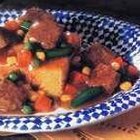
How to Can Homemade Vegetable Beef Soup

Can You Thicken Soup With Xanthan Gum?
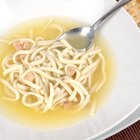
Does Canned Soup Go Bad?
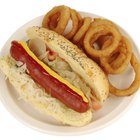
What Are the Dangers of Sauerkraut?

How to Process & Seal Hot Sauce Bottles
How to Preserve Salsa Made With Canned ...
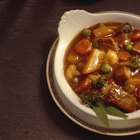
Easy Stews to Freeze
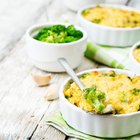
Low Sodium Substitute for Condensed ...

How to Vacuum Seal Jars

How to Can Pork Tenderloin in Half Pint ...
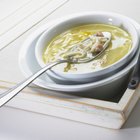
How to Add Noodles to Soup

What Can I Use Instead of Cream of ...

How to Cook Yakamein
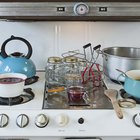
How to Can Beef Meat With a Pressure ...

How to Make a Cream Soup Without ...

Can You Freeze Canned Goods?

Do You Use Flour or Corn Starch to ...

How to Fix Lipton Onion Soup

Preservatives in Campbell's Soups
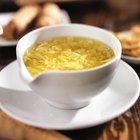
Calories in a Pint of Egg Drop Soup
References
Resources
Writer Bio
G.D. Palmer is a freelance writer and illustrator living in Milwaukee, Wis. She has been producing print and Web content for various organizations since 1998 and has been freelancing full-time since 2007. Palmer holds a Bachelor of Arts degree in writing and studio art from Beloit College in Beloit, Wis.